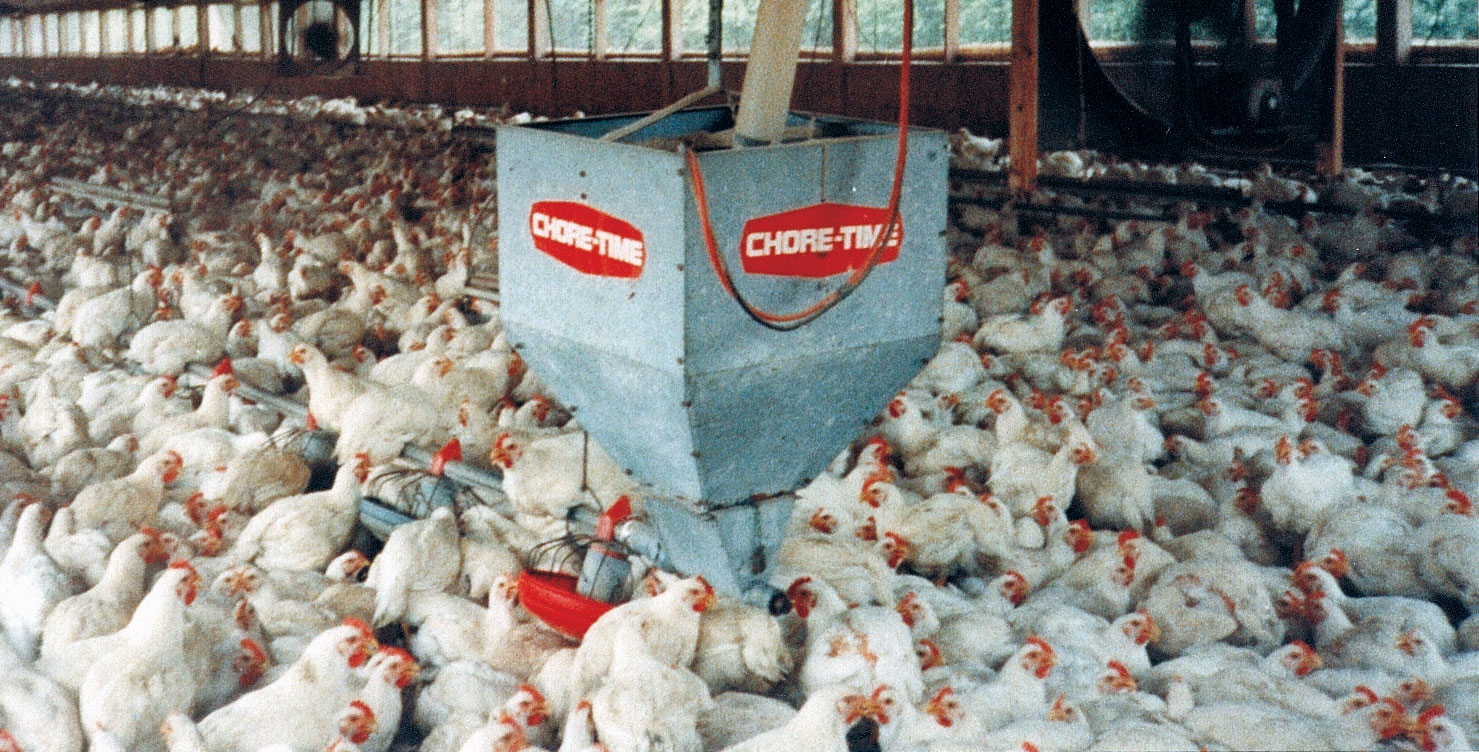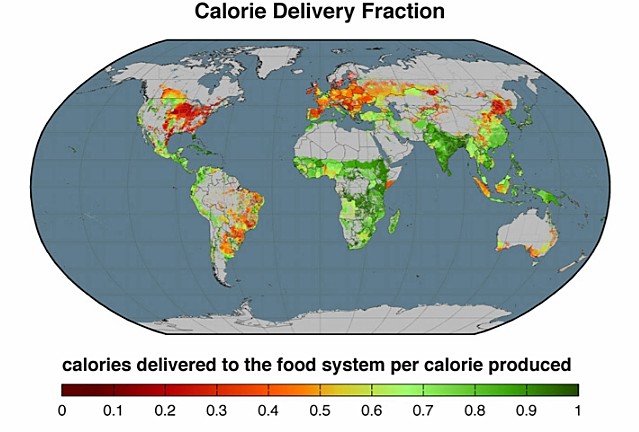We grow corn and feed it to cattle, pigs, chickens and fish. We grow wheat and do the same. If we stopped doing this researchers tell us we could increase human caloric intake globally by 70%. This research comes from the University of Minnesota and is led by Emily Cassidy, an environmental scientist.
“We essentially have uncovered an astoundingly abundant supply of food for a hungry world, hidden in plain sight in the farmlands we already cultivate,” says Cassidy. According to her, “36% of the calories produced by the world’s crops are being used for animal feed, and only 12% of those feed calories ultimately contribute to the human diet (as meat and other animal products). Additionally, human-edible calories used for biofuel production increased fourfold between the years 2000 and 2010, from 1% to 4%, representing a net reduction of available food globally.”
The map above illustrates global distribution of calories delivered to the food system per calorie produced. For example in China 82% of rice calories are delivered to humans for consumption while 77% of the corn produced (China is second to the United States in corn) calories are fed to animals. In fact, 33% of China’s produced calories end up going for animal feed. Brazil shows a similar pattern although the allocation of where the calories go is different with more than half of the soybean crop going to animal feed and much of the sugarcane to biofuel.
Overall the study looked at 41 major crops and what proportion of them were being used for direct human consumption. The conclusions, of all the plant protein we grow, only 49% ends up consumed directly by us.
And here are other interesting statistics. If we converted the land we have tied up today in crops grown specifically for beef, pork and chicken, just in the United States alone, we could feed 1 billion more. And if we applied this globally that number would grow by an additional 3 billion to give us our 4 billion total.
When you consider current global population of over 7 billion with almost 1 billion suffering from malnutrition, and then you project population growth to 9.5 billion by 2050, you can conclude that changing how we purpose the land and what we grow on it gives us more than enough capacity to meet food demands in face of the 2050 population bubble. In fact the carrying capacity of the planet is far greater than we realize. See my posting in 2012 on this same subject.










